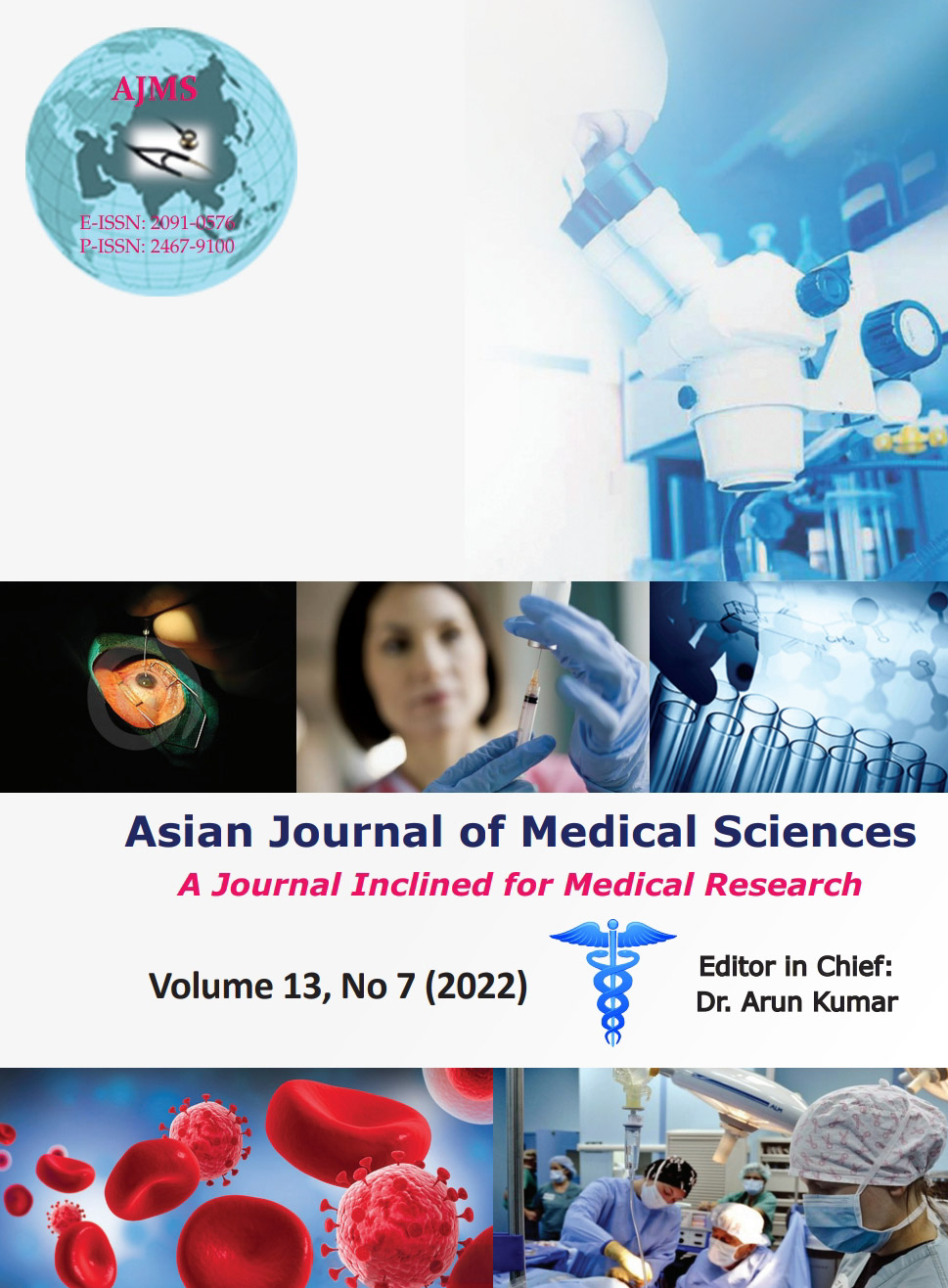Vitamin D status in peripheral vascular diseases: A longitudinal prospective study
Keywords:
Cardiovascular risk factors, Peripheral artery disease, Parathyroid hormone, Vitamin D deficiencyAbstract
Background: Peripheral artery disease (PAD) is due to abnormal Narrowing of arteries other than heart and brain (primarily due to atherosclerosis). PAD is the most common form of PVD.
Aims and Objectives: In the present study, we analyzed Vitamin D association with peripheral vascular diseases as well as coagulation and inflammation parameters.
Materials and Methods: The study was conducted for 100 PAD patients of 18–70 years age and divided in Group I≤20ng/ml and Group II>20ng/ml for serum Vitamin D level. A single, oral, and high- dose Vitamin D3 supplementation 1,20,000IU was given in GroupI. At baseline and at the end of the study after 1 month, Ankle Brachial Index, modified Rankin Scale, Vitamin D, Inflammation and coagulation parameter, HbA1c, etc., were performed in all patients. Evaluation was done using SPSS. The level P<0.05 was considered as the cut off value of significance.
Results: The majority of the PAD patients were Vitamin D deficient and have higher HbA1c level with statistically significant (P<0.05) association. This is because low Vitamin D is the risk factor for diabetes in which HbA1c level is higher.
Conclusion: Asingle, oral, and high-dose Vitamin D3 supplementation did not alter parameters of inflammation and hemostasis in patients with peripheral arterial disease, adding more data to other studies that did not confirm a causal role of Vitamin D in cardiovascular disease.
Downloads
Downloads
Published
How to Cite
Issue
Section
License
Copyright (c) 2022 Asian Journal of Medical Sciences

This work is licensed under a Creative Commons Attribution-NonCommercial 4.0 International License.
Authors who publish with this journal agree to the following terms:
- The journal holds copyright and publishes the work under a Creative Commons CC-BY-NC license that permits use, distribution and reprduction in any medium, provided the original work is properly cited and is not used for commercial purposes. The journal should be recognised as the original publisher of this work.
- Authors are able to enter into separate, additional contractual arrangements for the non-exclusive distribution of the journal's published version of the work (e.g., post it to an institutional repository or publish it in a book), with an acknowledgement of its initial publication in this journal.
- Authors are permitted and encouraged to post their work online (e.g., in institutional repositories or on their website) prior to and during the submission process, as it can lead to productive exchanges, as well as earlier and greater citation of published work (See The Effect of Open Access).




